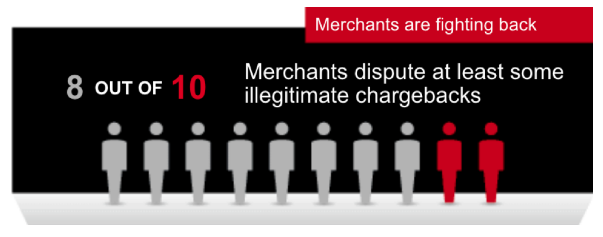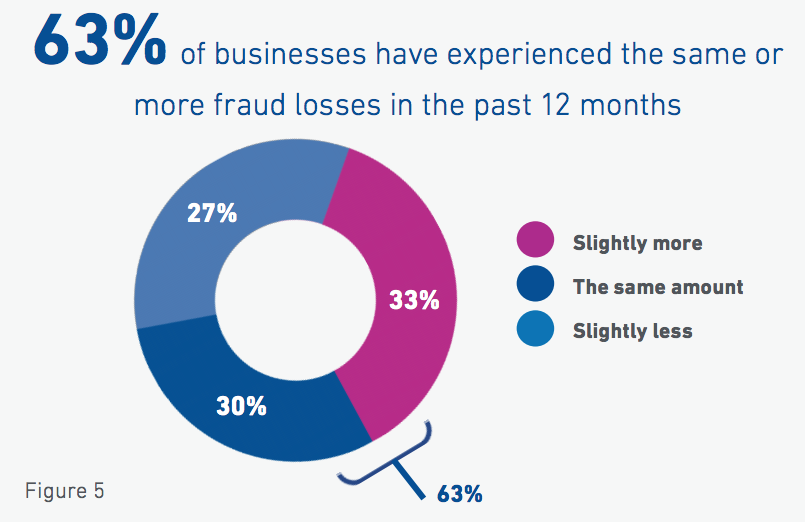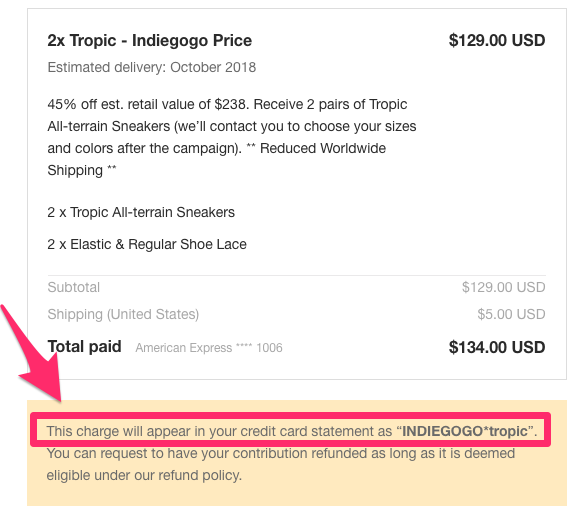How to Manage and Avoid Ecommerce Chargebacks
Chargebacks have become a growing problem for ecommerce companies. In fact, credit card chargebacks are rising at a rate of 20% each year.
Statistics show 40% of consumers who file chargebacks will do so again within 60 days. And 50% of those people will file another one within 90 days.
Banks and credit card companies make it easy for their customers to dispute charges on their accounts. Ecommerce companies are paying the price for this behavior.
Those of you who have an ecommerce shop know what I’m talking about. I’m willing to bet you’ve had to deal with these situations in the past.
They are a real pain, to say the least. On your end, you thought you did everything right.
A customer placed an order online. You fulfilled the order and got paid.
Only later, you see that the transaction was nullified. You probably weren’t even notified of this chargeback until after the fact.
What happens now? Why are you being punished for fulfilling an order? How far do you need to go to optimize the customer experience?
Chargebacks have become a hot topic lately in my consulting work. And nobody seems to know how to handle them.
That was my inspiration for writing this guide.
First, I’ll explain what you need to do once a chargeback has been filed. Then, I’ll show how you can prevent this from happening again in the future. At the very least, you’ll be able to minimize your chargeback rates moving forward.
Here’s what you need to know.
Don’t waste time disputing chargebacks
Everyone I’ve talked to has the same first instinct when it comes to chargebacks.
Dispute it.
They feel their ecommerce business was not in the wrong, so if they file a dispute, the situation will be rectified.
Unfortunately, that’s rarely the case.
Sure, in theory, it sounds like a good plan. But banks and credit card companies design the chargeback process to protect the consumer, even if the retailer isn’t at fault.
I know you don’t want to hear this, but disputing chargebacks will be a waste of your time. You don’t want to deal with this headache.

As you can see, the overwhelming majority of merchants are disputing chargebacks they feel are illegitimate.
What is considered illegitimate?
Well, research shows that 80% of consumers have filed a chargeback simply because they didn’t have time to communicate with a merchant to receive a refund.
This is an example of friendly fraud. The customer commits fraud without realizing what they’re doing is wrong. Or maybe they knew this was an illegitimate reason but didn’t care.
Regardless of the reason, just 18% of merchants say they win the majority of their disputes against friendly-fraud chargebacks.
Banks and credit card companies are still siding with the consumers.
What is the takeaway here? Don’t waste your time.
Sadly, in the long run, this will be a losing battle for you. You’re much better off putting more effort into avoiding chargebacks in the first place.
In certain instances, it’s worth disputing a chargeback, but I’ll discuss that later.
Ship orders on time
It’s possible your customers are filing chargebacks if their orders weren’t received when promised. There are a couple of different reasons for this.
First of all, if the package hasn’t arrived, they might think they got ripped off by the merchant. This is especially true if you’re a new, relatively unknown business.
That’s why you need to understand the top elements that add credibility to your website to make your company appear more trustworthy.
It’s also possible the customer thinks the package was stolen from their door or potentially misdelivered. Either way, if there’s no delivery, the customer won’t want to pay for the order.
But what if it’s none of these reasons?
Maybe the order is still on the way and hasn’t been delivered yet.
In this case, the customer could start the chargeback process and then receive their package a few days later. By then, the damage is already done.
Do not promise a shipping deadline you can’t meet.
With Amazon offering two-day free shipping on many orders, it makes anything longer than that seem unacceptable. That’s why customers with Amazon Prime memberships have higher expectations for free shipping timelines.

Furthermore, in 2017, 35% of consumers said they expect businesses to have much faster delivery times.
And in 2018, that number has increased. Now, 43% of people say they expect faster deliveries. I’m expecting that number to continue rising each year.
If you can ship orders fast and make sure they get delivered on time, you will reduce the chances of getting chargebacks filed for this reason.
But sometimes delays happen for reasons that are out of your control.
Winter storms, other acts of nature, or truck breakdowns could cause delays in the shipping process.
In this case, you need to let your customers know their orders will be late ASAP.
Let them track the shipping. This should be a standard part of your ecommerce process.
Once an order has shipped, you should immediately send the customer an email with the tracking number so they have access to this information.
Monitor transactions for fraudulent activity
Don’t assume every purchase on your ecommerce platform is legitimate.
You need to check each transaction and look for red flags of fraud.
I recommend setting up a fraud metric system to help you with this process. This system would set parameters to flag orders that appear to be suspicious.
For example, if you have an abnormally large purchase shipped to an address different from the billing address, you may need to require further verification to complete the order.
In addition to credit card numbers, your ecommerce shop should also require billing addresses. This is called an AVS, short for address verification system.
You’re probably familiar with this since I’m sure you’ve had to do it in your personal life to complete some transactions.
With an AVS, a criminal with an access to a stolen credit card can’t make a purchase without knowing a zip code associated with the card. If you don’t have this added security measure in place, you’ll be out of luck when a cardholder files a chargeback for a purchase made by a credit card thief.
According to Experian, businesses are experiencing an increase in fraud losses in 2018:

Only 40% of business owners say they are very confident in their abilities to detect fraudulent activity.
Furthermore, 45% of business executives say they are significantly more concerned about the risk of fraud becoming a growing problem.
This is no surprise. That’s because the cost of fraud is adding up quickly.
On average, fraud is costing retailers 2.1% of their annual revenues.
I know this may not seem very high at first glance, but this adds up faster than you might think.
If you’re doing $2 million in sales, that means you’re losing $42,000 each year to fraud.
That’s assuming you’re within the average. If you’re not taking steps to prevent fraud and chargebacks, these numbers can be even higher.
And 2.1% doesn’t sound small when you put it in terms of dollars.
As you can see from the graph above, only 27% of businesses say they’ve experienced fewer fraud losses over the last 12 months. You need to take steps to put your ecommerce business in this category.
Provide exceptional customer service
As I said earlier, sometimes customers file chargebacks for the wrong reasons, such as wanting a refund.
While this is not an appropriate reason to take that action, the customer can still win. Plus, you probably won’t win a dispute.
To avoid this scenario, you need to make sure you have easily accessible customer service options.
Take a step back, and analyze in what ways your customers can reach you if they have problems.
If a general call center is the only option, chances are your customers are frustrated and dissatisfied.

As you can see, 43% of consumers think it’s difficult to reach customer support agents.
People are busy. They have better things to do than waste time being on hold, waiting for someone to address their concerns.
It’s likely very easy for them to dispute charges by opening their credit card mobile apps. This can probably be done in a couple of clicks.
That’s why you need to improve your customer service by implementing live chat.
Now if someone has a problem with their order or product, or has a general question, they can reach a customer service representative as fast as possible.
This gives you the ability to offer a solution much quicker. You want to give your customers complete peace of mind.
You’re there to help them. Be available for assistance on as many channels as possible.
Monitor your social media comments. Shockingly, 79% of customer complaints online are ignored by businesses.
It’s unacceptable if your ecommerce business is part of the majority in this case. That’s terrible customer service.
When someone complains, look at it as a chance to make things right. If you ignore them, it could be the reason why they file a chargeback.
It’s also important to make sure that everything you’re selling meets a quality standard and is not falsely advertised. High-quality products that match the online description won’t have as many chargebacks.
Send post checkout notifications and follow-up emails
Once someone completes a purchase online, you want to let them know how the order will be billed.
Explain how the charge will read on their credit card statement if the name of your ecommerce shop does not match your billing statement name.
If your customers don’t recognize a description on their credit card statement, they could file chargebacks without realizing they purchased from your company.
It’s easy to avoid confusion by being transparent. Take a look at this confirmation email from Tropicfeel:

The company highlighted how the charge will read on credit card statements. Because it’s a startup still building its reputation, it’s important it makes its name clear for the customer.
Take your email strategy one step further. Send a follow-up message once the order is delivered.
This email will be a great opportunity for you to ask for customer feedback.
If something is wrong, invite the customer to share their problems with you. Remind them of your fast and easy return policy.
Now you can stay ahead of any issues and rectify the situation before the customer has a chance to file a chargeback.
Choose a processor with great merchant support
How are you currently processing payments for your ecommerce shop?
If you’re not happy with your current situation, you should consider switching to a payment processor that offers friendly merchant services.
The cheapest option isn’t always the best. You won’t get good support that way.
Earlier I said you shouldn’t dispute chargebacks, but depending on the circumstances, it may be necessary at certain times.
If you have a couple of chargebacks for $100 or $200, it’s best to just let them go. But if you have illegitimate chargebacks totaling tens of thousands of dollars from just a few transactions, you’ll likely want to follow up with a dispute.
Under these circumstances, you’ll want to make sure this process is as smooth as possible for you. That’s why I recommend using a processor such as PayPal or Stripe.

As you can see, it’s easy to manage your merchant support options through the Stripe dashboard.
All you need to do is upload evidence to the platform, and it’ll submit everything to the bank.
For this added service, you’ll be charged a dispute fee. But I think it’s worth it.
Good payment processors will make your life much easier in difficult circumstances.
Again, you shouldn’t expect to have a high success rate with your disputes. But if you’d like to deal with this process, it’s best to have a processor do the heavy lifting for you instead of dealing with the banks directly.
This will save you time and minimize your stress.
Conclusion
Chargebacks are starting to become a wide-spread problem for ecommerce businesses.
Your company needs to know how to deal with them and prevent them from happening in the future. Otherwise, it’ll cost you a lot of money in the long run.
For the most part, it’s not in your best interest to dispute chargebacks. Most merchants aren’t winning these disputes, so choose your battles wisely.
In the event that you want to go through this process, it helps to have a good relationship with your payment processor.
To avoid chargebacks, you need to provide excellent customer service.
Ship your orders on time. Make sure customers have easy access to representatives through as many channels as possible, including live chat.
Monitor transactions for fraudulent activity. Implement an address verification system to curb criminal activity.
Send post checkout emails to customers, explaining how their purchases will be billed. Then, send another message asking for feedback once the order has been delivered.
If you follow the advice in this guide, your ecommerce business will have an easier time managing and avoiding chargebacks in the future.
What steps is your ecommerce company taking to avoid chargebacks?
COntributer : Quick Sprout https://ift.tt/2zMrzpf
 Reviewed by mimisabreena
on
Thursday, December 06, 2018
Rating:
Reviewed by mimisabreena
on
Thursday, December 06, 2018
Rating:
















No comments:
Post a Comment